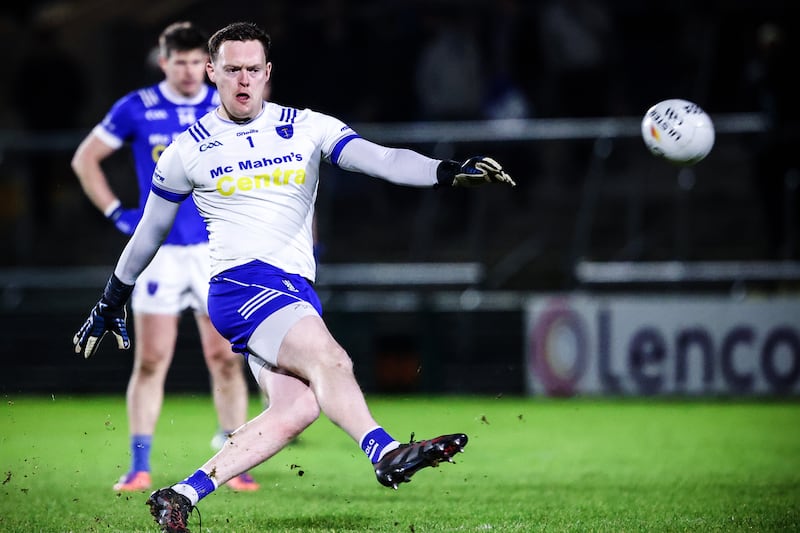Fans will remember Windmill Lane as the site of the studio where U2 began their career. For Hibernia Real Estate Investment Trust (Reit) chief executive, Kevin Nowlan, the opening of the property company's building at the same Dublin location was at least as significant as a first album.
“It’s our first development,” he says of what is now called 1WML, explaining that it is the first project that Hibernia has overseen from the ground up.
1WML is a prototype for Hibernia’s approach to meeting tenants’ demands for more than just somewhere to put desks. A large, airy atrium to the right of its reception area can be closed off and used for conferences, company-wide meetings or even, in a nod to its roots, gigs.
“A lot companies are looking for this now, places where they can bring their entire workforces,” Nowlan says. The building will also include a gym that workers can share, and restaurants. The site’s old grain store remains part of the structure and the foundations of the original windmill, uncovered during construction, will form part of yet another shared space for workers.
Much of it has been let: to lawyers Pinsent Mason; Irish advertising and marketing specialist Core Media; and US software developer Informatica.
Just across the lane is a similar complex, extending to Sir John Rogerson’s Quay, on which the company is also working. Together the blocks will be known as the Windmill Quarter and will have a combined 37,000sq m (400,000sq ft) of space.
When we started four years ago, we were letting at €26 a square foot. Now we are negotiating rent reviews at €58
Hibernia announced plans to float on the Irish Stock Exchange four years ago. Its strategy was simple: focus on Dublin offices. The company has 29 properties. Along with Windmill Lane, it bought buildings on Cumberland Place, 1-2 Docklands Central in the International Financial Services Centre and the Garda headquarters on Harcourt Street.
Commercial property in the capital accounts for more than 80 per cent of its business. That looks like a good place to be right now. Hibernia and its peers will have let almost 280,000sq m (3,000,000sq ft) of office space in the city by the end of 2017.
“That has never been done in a single year in Dublin before,” Nowlan observes. “When we started four years ago, we were letting at €26 a square foot. Now we are negotiating rent reviews at €58, but even at more than twice the price, filling the offices is not much of a problem.”
Stamp duty
It was no surprise then that commercial property featured in the budget. Minister for Finance Paschal Donohoe trebled stamp duty on purchases to 6 per cent and amended an original capital gains tax exemption for properties bought between 2011 and 2013, allowing them to be sold on after four years rather than the original seven.
Nowlan believes the capital gains tax change will help get residential land moving. On stamp duty, he feels the Government should have signalled its intention more clearly but is happy that Donohoe has since said that he is unlikely increase it again. He estimates that the increase will knock €53 million-€54 million off the value of his company’s properties.
Hibernia’s interim results, released yesterday, show that those properties were worth almost €1.3 billion at the end of September, 5 per cent more than six months earlier. The increase in the value of its portfolio helped to double profit before tax to €70 million.
We are evolving into a company that is going to pay significant dividends
Companies such as Hibernia measure their returns by combining portfolio growth with income. In those terms, its investors were 7.2 per cent better off at the end of September than at the end of March, while the overall Irish market grew at 4.8 per cent.
Nowlan is happy with this. “You’re always benchmarked against what the market has done,” he observes. “At the year end, we outperformed the market as well, significantly enough. That’s very positive when you’re considerably outperforming your peers, and I suppose that’s what we set ourselves up to do.”
Development projects such as the Windmill Quarter help. There are others sites where Hibernia can take a similar approach, including one at Clanwilliam Place, facing the Grand Canal at the end of Mount Street, which Nowlan thinks could potentially accommodate about 18,580sq m (200,000sq ft) of space.
Hibernia recycles capital where appropriate into new projects and has €140 million for further development or acquisitions.
Along with property values, income is the other key element. Like all Reits, Hibernia must pay dividends to investors amounting to 85 per cent of its rental income, once it has sufficient reserves. Its contracted rent is about €50 million a year, a figure that will increase to around €60 million in 12 months’ time once work on all its current development projects is finished.
Rent reviews will add a further €6 million or €7 million, bringing income within hailing distance of €70 million a year. “So, we are evolving into a company that is going to pay significant dividends,” Nowlan says, though he points out that this is not Hibernia’s only motivation.
“If you ask us to compare ourselves to a UK company, I’d say we’re more like a Derwent or a Great Portland, where we’re not completely focused on dividend. We’re also focused on redevelopment and regeneration.”
People say I worked in all the wrong places at all the right times
Both Derwent and Great Portland Estates are specialist investors in the London office market. In much the same way that Hibernia wants to focus on Dublin, they limit their businesses to the British capital.
Family roots
Hibernia's chief executive comes from a family with roots in Dublin property. His father is Bill Nowlan of real estate advisers WK Nowlan.
Rugby actually got first call on his talents. He spent two seasons as a centre with Leinster and was capped twice for Ireland.
Nowlan qualified as a surveyor in 1994 and worked in agencies before joining Anglo Irish Bank, the reckless and now defunct lender that helped bring down the Republic's financial system.
Nowlan left there in 1999, before the rot set in. "People say I worked in all the wrong places at all the right times," he says. He then joined Treasury Holdings, run by Johnny Ronan and Richard Barrett, two figures who enjoyed a high profile in the last property boom. While Treasury is now gone, the developers have made their own comebacks. He stayed for five years, learning a lot about procurement and development.
Nowlan then went to his family’s consultancy in 2004. His father, he recounts, called the market. “We could see stuff getting really silly by 2006 and he had put a lot of syndicates together to buy in Ireland. He sold them all out around then,” he says.
As the recession kicked in, the firm was hired as development manager for Grangegorman Development Agency, which was overseeing an €800 million State-sponsored urban regeneration project in the north Dublin neighbourhood primarily involving the city’s institute of technology.
In 2010, Nowlan's attention turned to another State body, the National Asset Management Agency (Nama), set up to buy the banks' property loans and mend their balance sheets. His background ticked all the boxes. He says it was a rare opportunity for a surveyor to do something for his country. "That's why I made the decision that I was going to go in," he says.
Nowlan was one of five managers who oversaw the loans as they transferred to the agency. At one point, he had 36 clients owing €12 billion in total. One was Seán Dunne, one of the boom’s highest rollers, who is still locked in a bitter court battle with Nama.
As he signed the Official Secrets Act, he can talk only generally about his time with Nama. He argues that the agency succeeded because it did not set about blaming individuals for the entire system melting down. Instead, it was proactive and focused on how to get the best out of the situation.
When he left in Nama 2013, he went back to WK Nowlan. At that point, he could see the opportunities and was wondering from where the new long-term money in the Republic’s property market would come. At first he thought of a private fund. The “reit” opportunity presented itself on the back of legislation passed earlier that year and followed the success of rival Green’s stock market debut in July.
Reit legislation
The reit legislation was meant to bring in long-term money to help haul the property market up from the bottom of the recessionary trough. How serious is the risk that we will end up back there again? He believes that different conditions now prevail, and that the structures investors use are better. Reits are mostly equity. Hibernia’s loan to value ratio is 14 per cent, so it’s got a very small amount of debt in relative terms. As far as Nowlan is concerned, that is a central safeguard.
“There’s still virtually no speculative development funding in this market. That’s a very big difference. That makes people not get into trouble,” he says. “For 20 years, Ireland and particularly Dublin was a family office market. It was driven by many family offices which had big property portfolios, but their biggest relationship was with their bankers. That was how development evolved, and generally our booms and busts were driven by oversupply.”
This time, equity rather than debt is driving the market. Public limited companies, such as his, control much of that. They are vigilant about oversupply and so have taken only a certain amount of risk, mostly over the last three or four years.
“Even though things are going really well at the moment, next year you will see less space built than this year,” he predicts. “Therefore, I think you are seeing the likes of ourselves, Kennedy Wilson, Green and Iput, etc, slowing down on speculative delivery, slowing down for a while and just maybe getting a little bit more cautious.”
The demise of the upward-only rent review adds further caution. If companies on Hibernia’s scale oversupply the market, it could drive rents down. So there is a big incentive not to do so. Still, he agrees that the risks are there.
“It’s the old adage, when America sneezes, we catch cold,” he says. “The biggest risk is that the States has been on such a run for a long period of time, they go into recession and it will have big implications for us.”
Local hazard
That is a global risk, but he pinpoints the housing crisis as a more immediate local hazard, one that could prompt multinationals to look elsewhere.
“We go around and meet our tenants regularly, and the number one thing that turns up is the lack of availability of residential accommodation,” he says. “I think this situation needs to be sorted out in the next three years, I think it’s reaching a tipping point now. You are starting to see tenants be very vocal and you’re starting to see it having real impact on potential growth.”
Nowlan recommends two codes, one for build to sell and another for build to rent
Despite high demand in our cities, where employers locate and people want to live, he says few developers will build apartments because they can’t make money from this. The crux is a building code that he says fails to distinguish between apartments built to sell and apartments built to rent, mostly to younger, urban dwelling workers.
This means that developers must include features such as front and back windows and car parking. Similarly, he points out that local authorities want too many three-bedroom apartments, when the focus should be on one- and two-bedrooms.
Nowlan recommends two codes, one for build to sell and another for build to rent. He says that developers should also get VAT rebates on build-to-rent apartments, as they do for offices.
Long-term renting is now normal in Irish cities. Nowlan says there are plenty of professional landlords, similar to another Reit, Irish Residential Properties (Ires) that would be willing to invest here and tackle one element of the housing crisis. “There’s a great opportunity to embrace a significant amount of money that’s available in the world that is very cognisant of how cities are changing,” he says.
CV
Name: Kevin Nowlan
Age: 46
Position: Chief executive, Hibernia Reit
Why is he in the news?: The company reported 5 per cent growth in the value of its properties to €1.3 billion this week. It recently opened its latest development, at Windmill Lane in Dublin, and is approaching the fourth anniversary of the announcement of its flotation
Career: Began working in property in the 1990s, going through Anglo Irish Bank and Treasury Holdings before joining his father's consultancy, WK Nowlan in 2004. He joined Nama in 2010 and returned to his family's firm three years later before setting up Hibernia
Family: Married with three children
Something you would expect: Given that he earned two caps for Ireland, he's obviously a rugby fan
Something that might surprise: He's pursuing a long-time interest in boats and doing a day skipper's course




















